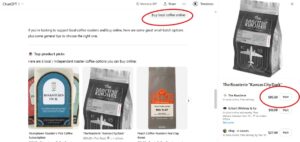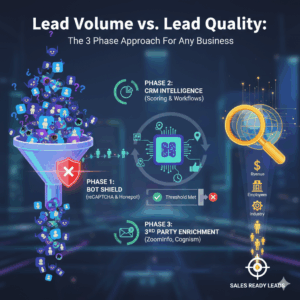Search engine optimization (SEO) is one of the most talked about factors affecting digital marketing strategy in today’s marketing world. One of the less talked about points is how your sitemap can affect your SEO strategy. At Rank Fuse, we know the importance of keeping your sitemap relevant and how that can dramatically impact your SEO strategy in a positive way.
What is a Sitemap?
A sitemap is a simple directory that details what is contained on your website, including the content on the pages. Search engines crawl sitemaps to find relevant information for search results.
Within a sitemap, webpages are listed in hierarchical order, so the most relevant pages are at the top of the sitemap, while the least relevant pages are relegated to the bottom of the sitemap. Sitemaps are intended to make website navigation easier for users. Using a sitemap will make the website theme more cohesive by allowing users to view the various sections of the website all of the links on the same page. Sitemaps that are well-optimized will be easier for spiders to crawl. If the spiders can’t crawl the website, it can’t be indexed by Google and other search engines, which means that your content won’t get ranked on the results pages or get nearly as many visitors as you want.
Sitemaps come in two major types: XML and HTML. XML sitemaps are never seen by the end user and are only used to inform search engines like Google about the content on a webpage, how often the content is updated, and the importance of the pages in relation to one another.
HTML sitemaps are created to help those using the Internet find the content they are searching for on the web. The sitemaps make it easier for search engines and users by not containing all of the pages of the website. However, only a few formats of HTML sitemaps are supported by Google’s Webmaster tools.
How Does Your Sitemap Affect Your SEO?
Sitemaps are one of the factors that affect SEO. Since search engines crawl websites, it is important that your website is optimized. This means that you need to have meta-tags, .txt files, and other data completed. Your sitemap will help search engines crawl your website for terms that are included in any search engine results that your website could apply to.
A well-organized sitemap is like a blueprint for your website. Your sitemap can also tell search engines how often pages are updated, when they were last updated, and how important pages are in relation to one another. It is very important that you have a good sitemap if your website has a lot of pages, very few external links, and a lot of archived content that isn’t linked together. Without a high-quality sitemap, Google and other search engines will have a hard time crawling your website.
How to Optimize Your Sitemap for SEO
Optimization of your sitemap for SEO will ensure that you are doing as much as you can to rank on search engines. Here are a few strategies that you can use to optimize your sitemap for SEO.
- Use Tools to Automatically Generate Your Sitemap
Having a tool help you automatically generate a sitemap means that you are less likely to run into issues later on. Auditing software with built-in XML sitemap generators or available plugins can generate a sitemap for you, but there is also the option of manually creating a sitemap. However, it is important to create a complete sitemap if you want to use the “hreflang” attribute, which is why it is so much easier to use a tool to create your sitemap.
- Submit Your Sitemap to Google
When you are on your Google Search Console, you can submit your sitemap to Google. This allows you to test your sitemap to see the results before you submit it, which can show you any potential problems with the sitemap. In turn, this will help you check for errors that could prevent key landing pages from being indexed in search engines. Once you have submitted your pages, you can see what Google considers to be high-quality and worthy of indexation. There is no guarantee that your pages will be indexed, however.
- Prioritize the Best Pages in Your Sitemap
A high-quality site will rank better than one of lower quality, and if your sitemap sends bots to a bunch of low-quality pages, search engines will determine that your website isn’t one that users will want to visit. This is why you should try to direct bots to the most important pages on your website. The important pages on your website should be highly optimized, contain images and video, contain unique content, and prompt user engagement via comments and reviews.
- Find Indexation Problems
Unfortunately, Google Search Console doesn’t tell you which of your pages aren’t being indexed and why. However, you can attempt to isolate the problem pages and fix them or set them to “noindex.” By fixing errors or setting pages to “noindex,” you aren’t allowing these pages to reduce the quality of your website overall.
- Use Only Canonical URLs
If you have a lot of pages that are very similar, like product pages for items that are the same product but different colors, you want to use the “link rel=canonical” tag. This tag will tell Google and other search engines which one is the main page that should be crawled and indexed. Bots do a better job of finding important pages if you aren’t including pages with canonical URLs pointing at other pages on the website.
- Exclude “noindex” URLs
Leaving “noindex” URLs out of your sitemap will prevent wasting crawl budget. If you don’t want search engines to crawl certain pages, it is best to leave them out of your sitemap altogether. When you leave blocked and “noindex” pages in your sitemap, you are really telling Google that you both want a page indexed and don’t want it indexed at the same time.
For more help with sitemaps, contact Rank Fuse today at 913-703-7265. At Rank Fuse, we use a combination of tools and SEO expertise to create sitemaps that will fare well in search engines to improve website visibility.




